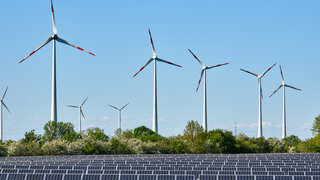Decentralised Wind Power

The expansion of wind power is crucial to achieve emission reduction goals. Decentralised wind power, located near load centers for efficient grid integration, addresses both the "wind curtailment" issue and energy loss associated with long-distance transmission. In China, optimising renewable resource distribution, increasing efficiency of wind energy, and promoting the integration of wind power with other distributed energy sources is particularly relevant. Decentralised wind can also contribute to the country’s goal of supporting rural economies. During the 13th Five-Year Plan, China's installed capacity of decentralised wind power grew rapidly, with a 107% increase in 2020 alone. Decentralised wind power is gradually becoming a key direction for the 14th Five-Year Plan and the mid- and long-term energy transition. Challenges persit in areas such as with grid access, insufficient policy support, regional development constraints, and complex approval procedures.
As a wind power leader in Europe, Germany had an accumulated onshore wind power installed capacity of 61 GW by the end of 2023, while China's onshore wind power reached more than 400 GW. Although German onshore wind power capacity is only 15% of China's, Germany’s land area is less than 4%, resulting in a much higher density of installed capacity. Germany does not strictly differentiate between centralised and decentralised wind power. Instead, the scale of wind farms is based on factors such as resources and grid conditions, similar to China's approach to decentralised wind power. Community wind power is a significant approach of decentralised wind energy in Germany, where local residents jointly purchase shares in wind farms to benefit from wind power investments.
Our activities
In 2021, the Sino-German Energy Partnership, in collaboration with Chinese and German industrial associations, think tanks such as China Renewable Energy Engineering Institute (CREEI), and private sector, jointly developed and submitted a policy paper. The document outlines the challenges in the decentralised wind power industry in China and proposes policy recommendations. Subsequently, the National Energy Administration released policies supporting decentralised wind power, playing a crucial role in promoting its development. This collaboration exemplifies the success of the Energy Partnership in facilitating cooperation and driving energy transition by engaging multiple stakeholders.